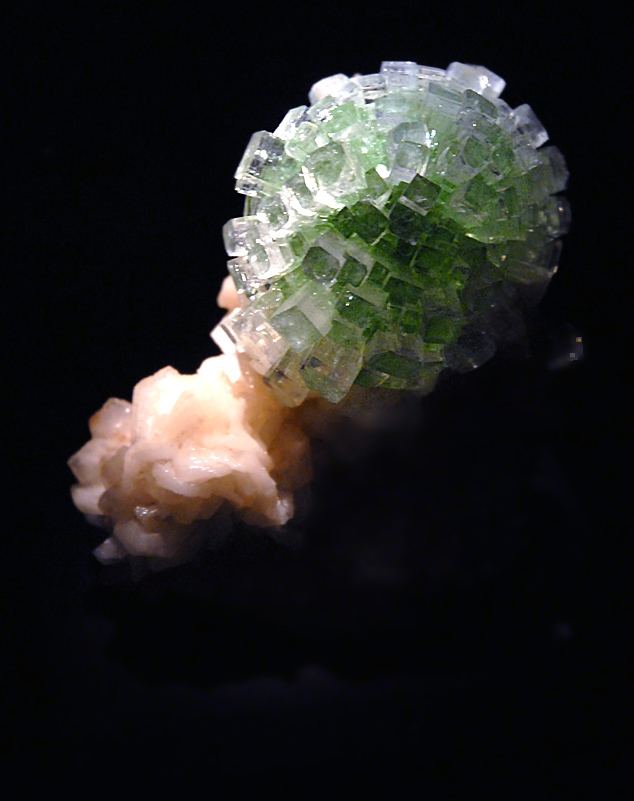Category Phyllosilicate | Cleavage Perfect on (001) | |
 | ||
Formula(repeating unit) (K,Na)Ca4Si8O20(F,OH)·8H2O Crystal system Tetragonal(Fluorapophyllite-(Na) is orthorhombic) Color Usually white, colorless; also blue, green, brown, yellow, pink, violet Crystal habit Prismatic, tabular, massive | ||
The name apophyllite refers to a specific group of phyllosilicates, a class of minerals. Originally, the group name referred to a specific mineral, but was redefined in 1978 to stand for a class of minerals of similar chemical makeup that comprise a solid solution series, and includes the members fluorapophyllite-(K), fluorapophyllite-(Na), hydroxyapophyllite-(K). The name apophyllite is derived from the Greek ἀποφυλλίζω apophylliso, meaning "it flakes off", a reference to this class's tendency to flake apart when heated, due to water loss. These minerals are typically found as secondary minerals in vesicles in basalt or other volcanic rocks. A recent change (2008) in the nomenclature system used for this group was approved by the International Mineralogical Association, removing the prefixes from the species names and using suffixes to designate the species. A subsequent nomenclature change approved by the International Mineralogical Association in 2013 renamed the minerals to include both suffixes and prefixes, as shown above.
Contents
Though relatively unfamiliar to the general public, apophyllites are fairly prevalent around the world, with specimens coming from some of the world's most well-known mineral localities. These localities include: Jalgaon, India; the Harz Mountains of Germany, Mont Saint-Hilaire in Canada, and Kongsberg, Norway, with other locations in Scotland, Ireland, Brazil, Japan, and throughout the United States.
Uses
Apophyllites are popular as collector's minerals. This popularity is due to a combination of factors, including their abundance, color variety, and well-defined crystals. Naturally forming pyramidal structures, they refract light in obvious rainbows, and can form "natural pyramids" when subjected to rock tumbling.
